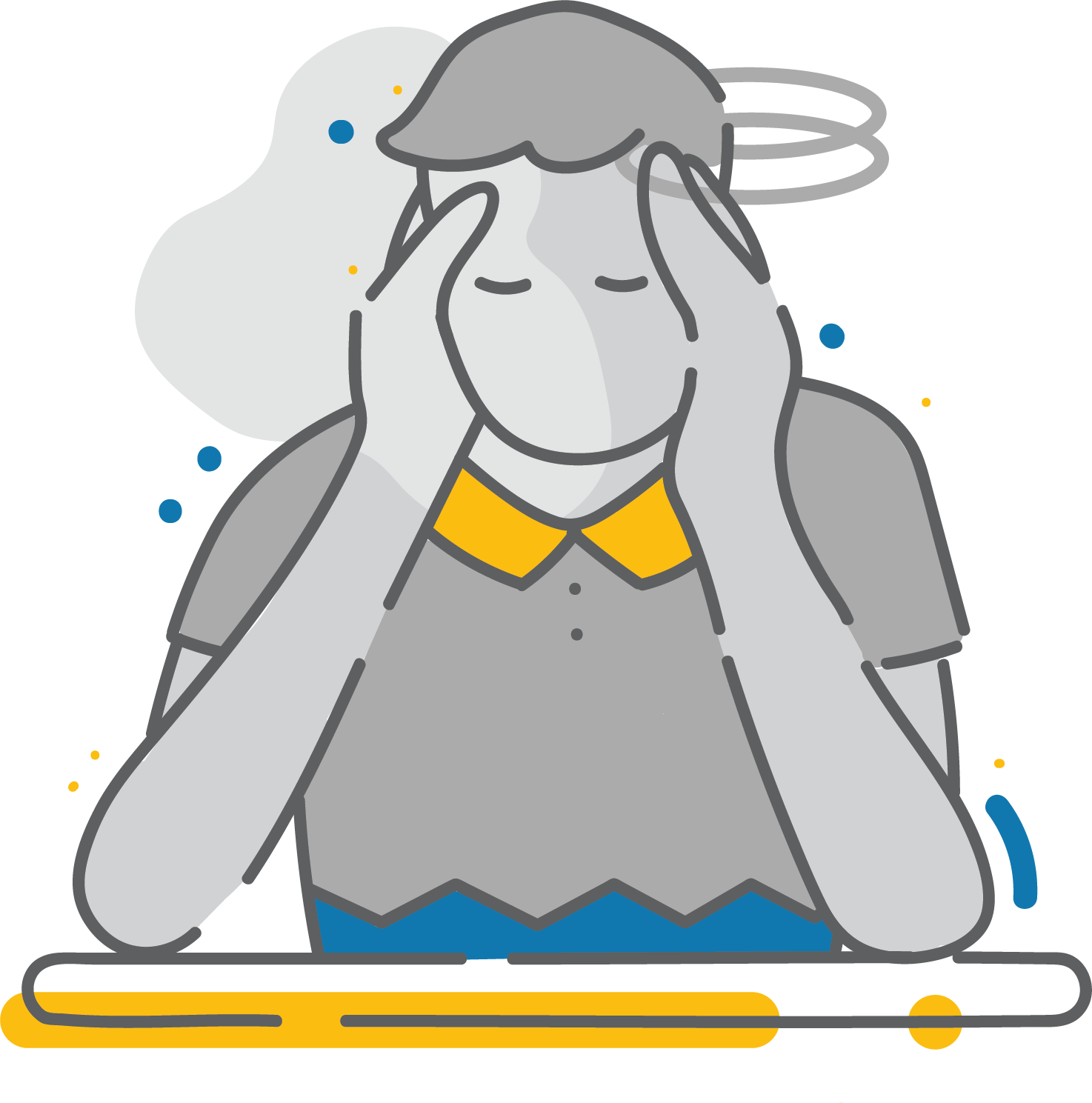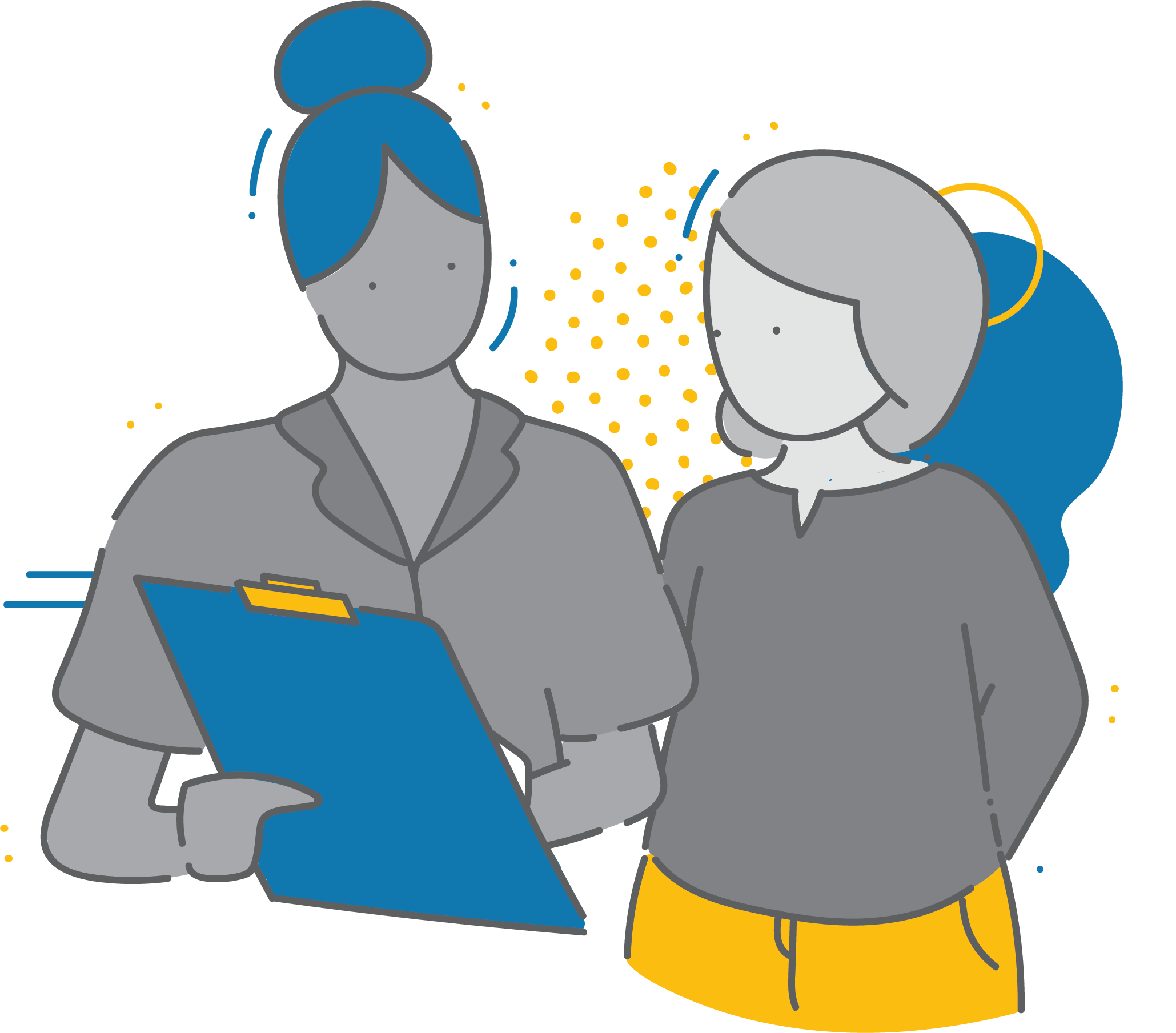Symptom Areas
Anxiety
Updated Jul 31, 2019
Swipe right to go to the next slide
Anxiety is common after concussion. It can be caused by an emotionally traumatic injury, the stress of prolonged symptoms, or the uncertainty of how long recovery will take. It may also be caused by having to meet life demands while feeling unwell, or by new demands, like medical appointments or dealing with an insurance company. Anxiety can mimic or worsen concussion symptoms, so it is important to identify and address.

Everyone experiences anxiety sometimes. Anxiety is often useful. It motivates us to prepare for and deal with danger and risk. When anxiety is uncontrolled and negatively affecting daily life, it can be a sign of an anxiety disorder that needs treatment. Only a physician or psychologist can diagnose an anxiety disorder. Click on a term in the left column below to see a description of some common anxiety disorders and related conditions.
A panic attack is a sudden surge of intense fear or discomfort that reaches a peak within minutes. It may involve racing heartbeat, sweating, shaking, shortness of breath, chest pain, nausea, dizziness, tingling, feeling cold or hot, fear of dying or “going crazy,” or feelings of unreality. A panic attack is not a mental disorder, but can happen as part of one. If panic attacks happen repeatedly and lead to persistent worry about panic attacks and an unhelpful change in behaviour related to panic attacks (e.g. avoiding exercise), it is called Panic Disorder.
Involves intense worry about a number of things, which is difficult to control. It happens almost daily and lasts at least six months. Other symptoms are common, including like irritability, trouble concentrating, fatigue, muscle tension, and trouble sleeping.
Involve intense long-lasting fear about a specific object or situation, like animals, heights, driving, or needles.
Involves intense fear and avoidance of social interactions (like conversations), being observed socially, or performing for an audience.
PTSD falls in a different but related category from anxiety disorders. PTSD develops in some people who experience or witness a life-threatening event, serious injury, or sexual violence. Symptoms include intrusive thoughts and dreams, flashbacks, and intense responses to reminders of the trauma; avoidance of things that remind of the trauma; and major changes in thinking and mood following the trauma.
The good news is that anxiety disorders are treatable. There are many effective approaches. You and your family doctor can decide which is right for you. Treatments could include self-management strategies, group or individual psychotherapy, or medications.

Active relaxation strategies can help reduce your anxiety. Two of the simplest strategies are Calm Breathing and Progressive Muscle Relaxation. Click on the strategy below to learn about them. These techniques take practice. Practice when you feel relaxed, so that it comes more naturally when you are stressed. Try these techniques for a few minutes at a time, and repeat as often as you need. The links on this page are from Anxiety Canada [webpage], which is a great resource for further learning!
In Calm Breathing, you take slow breaths deep into your belly, in through your nose and out through your mouth. Pause at the end of each breath in and out. Practice Calm Breathing with this Anxiety Canada worksheet [pdf]. Click to listen to these Calm Breathing audio clips from Anxiety Canada:
Progressive Muscle Relaxation has two steps. First, you tense a muscle group, then you release it, and notice how it feels when you relax. Usually you start at one end of the body and work your way to the other end. Click to listen to these Progressive Muscle Relaxation audio clips from Anxiety Canada:
One of the best free online resources for learning about anxiety and anxiety management is Anxiety Canada (https://anxietycanada.com/). If you are struggling with anxiety, take some time to visit this website for education, tools, and resources.
Another great online resource is Bounce Back BC [website] for Skill Building Program for depression, anxiety, stress or worry for adults or youth.
You’ve just learned about anxiety after concussion. If this area is important to you, you can consider taking action by completing an Action Plan [doc].
Here are some ideas:

Click the button above to toggle between light mode and dark mode. This toggle can also be found in the menu.
Hold
and tap
to zoom in.
Hold
and tap
to zoom out.
Hold
and tap
to zoom in.
Hold
and tap
to zoom out.
On most mobile devices, you can spread to zoom.
Increase your text size in your device settings.
Remember to take regular breaks while exploring MyGuide: Concussion.
Vancouver Coastal Health’s MyGuide Concussion Team would love to hear your feedback! It matters to us and helps to improve the experience for future users. Your responses will be kept anonymous and your privacy is a top priority. To complete a 15-20 minute online survey or request a telephone survey, please click the link below.